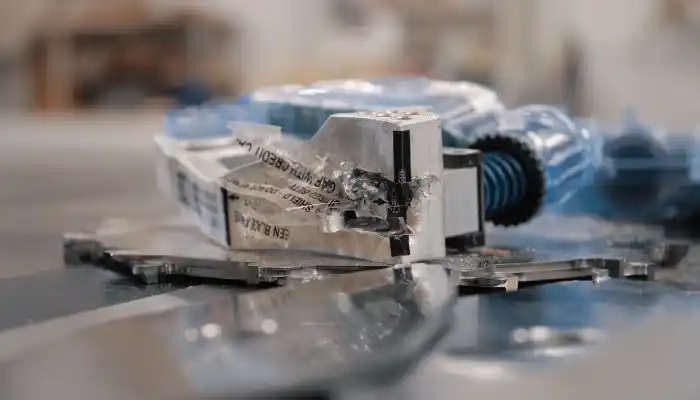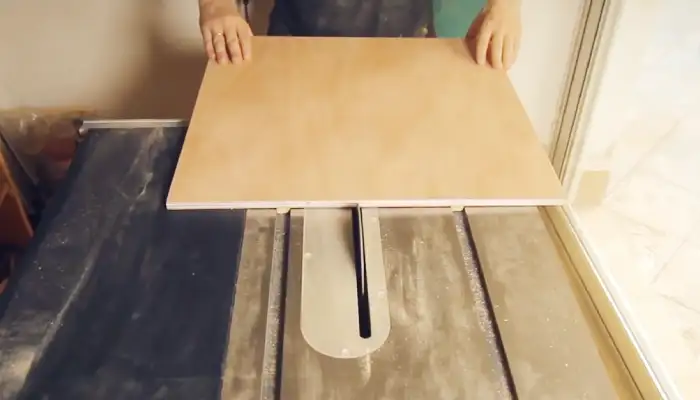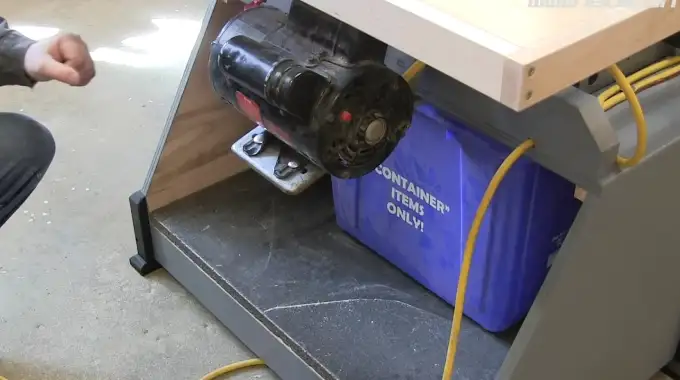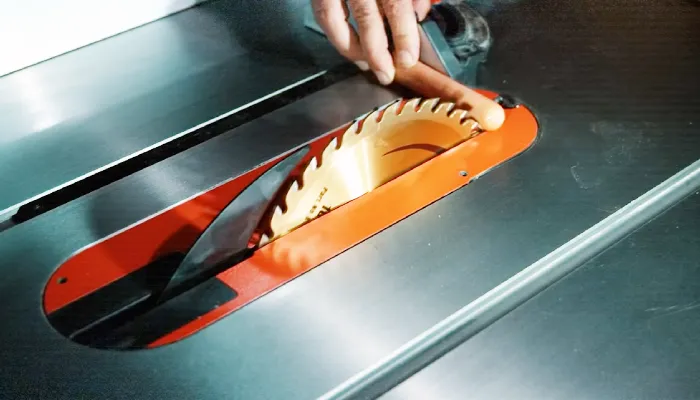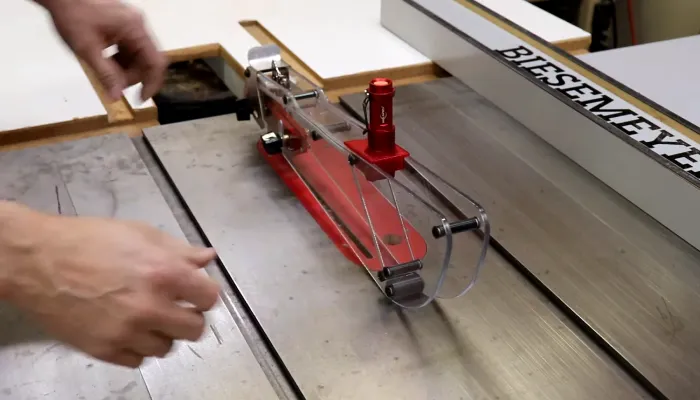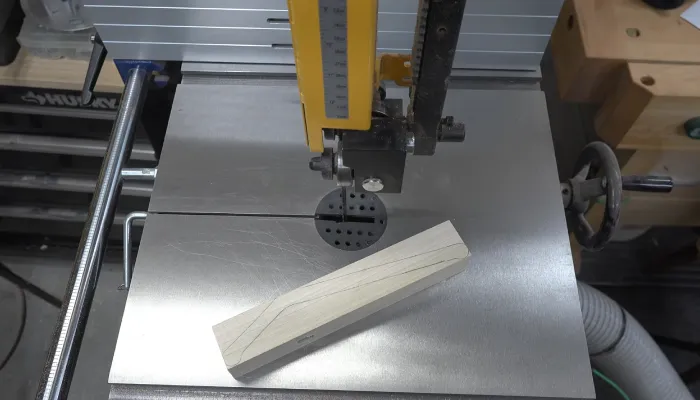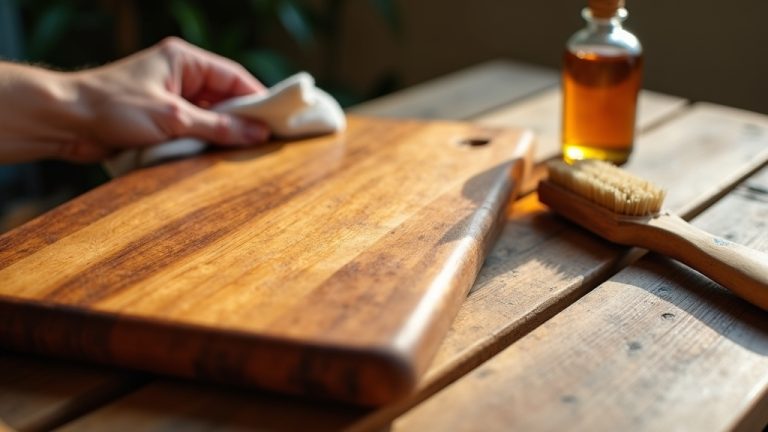Why Does My Table Saw Keep Tripping the Breaker: 10 Possible Reasons
Woodworking can be a stress-relieving hobby, but nothing can be more frustrating than a saw that constantly trips. According to my observations, several factors contribute to this problem, including electrical overload, faulty wiring, or mechanical issues.
When a table saw draws more current than the circuit can handle. It commonly occurs if the saw shares a circuit with other devices or appliances.
An inadequate extension cord can result in a voltage drop during saw startup, causing the breaker to trip. Also, motor-related problems can lead to overheating and tripping the breaker.
Throughout this article, I will discuss several reasons why your table saw keeps tripping the breaker, as well as some practical solutions to help you get the most out of your saw. So, let’s get to the bottom of this electrical conundrum.
Why Does My Table Saw Keep Tripping the Breaker: Possible Reasons
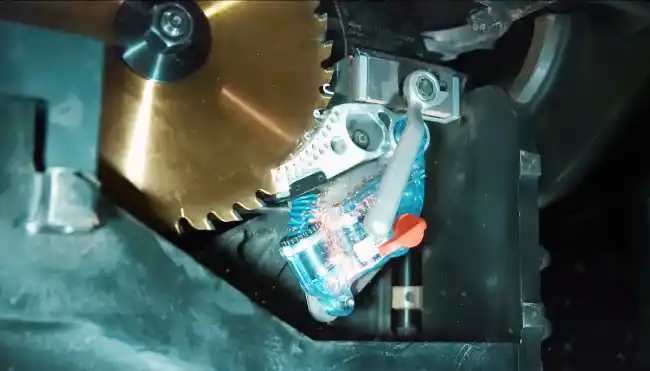
I will now discuss the possible reasons why your table saw keeps setting off the breaker.
- Electrical overload
- Extension cord quality (if you have one)
- Motor and mechanical issues
- Breaker type and rating
- Faulty wiring and circuit
- Fuse and RCD considerations
- Cold weather challenges
- Faulty AFCI breakers
- Inadequate circuit wiring
- Thermal overload
1. Electrical Overload
One common cause of a table saw tripping the breaker is electrical overload. This occurs when the saw draws more power than the circuit can handle. A table saw may share a circuit with other devices or appliances, which can contribute to the overload.
To address this issue, it’s recommended to ensure that the table saw is the only device on the circuit. By doing so, you can avoid the strain on the circuit and prevent it from tripping the breaker.
Additionally, if your table saw supports it, you may consider using a 240V circuit, which provides increased capacity and can handle larger electrical loads.
2. Extension Cord Quality (If You Have)
An insufficient extension cord can drop the voltage during startup, causing the breaker to trip. A low-quality or undersized extension cord can lead to increased resistance, which in turn causes a voltage drop when the table saw is started.
This voltage drop can overload the circuit and trigger the breaker. To avoid this issue, use a high-quality extension cord with an appropriate gauge.
3. Motor and Mechanical Issues
Motor-related problems can cause overheating and lead to the breaker tripping. Worn motor brushes are a common culprit. These brushes, which contact the motor’s armature, can wear down over time, resulting in poor electrical conductivity.
A bad drive motor can also cause the breaker to trip. If the motor isn’t running smoothly or is drawing too much power, it can overload the electrical circuit.
Furthermore, a faulty motor overload switch may be to blame. This safety feature is designed to protect the motor from overheating, but it can trip the breaker prematurely if it malfunctions.
Regular maintenance and inspection of the motor and mechanical components is essential to prevent these issues from occurring.
4. Breaker Type and Rating
Circuit breakers have specific trip curves determining when they will trip under different current levels. Using an incorrect or undersized breaker may lead to nuisance trips.
To avoid this, it’s recommended to understand the trip curve of your circuit breaker and select one that can handle the startup surge current of the table saw. Consider using breakers specifically designed for motor loads or slow-blow fuses, as they’re better equipped to handle the initial current surge without tripping.
5. Faulty Wiring and Circuit
I discovered the main culprit for a table saw tripping the breaker is faulty wiring and circuit. Damaged or chafed wires in the circuit can cause short circuits, resulting in the breaker being tripped.
To address this issue, inspect the wiring for any visible damage. Carefully examine the wires, looking for signs of wear, fraying, or exposed conductors. If any of these issues are found, immediate action is necessary.
Repair or replace the damaged wires to ensure a safe and reliable electrical connection. It’s vital to prioritize safety when dealing with electrical wiring. If you’re unsure or uncomfortable with the process, seek professional assistance to handle the repairs effectively.
6. Fuse and RCD Considerations
Another factor to consider when investigating why a table saw keeps tripping the breaker is the adequacy of the fuse and RCD. Using incorrect or improperly rated fuses can cause the breaker to trip unnecessarily. Ensure that the fuses used are the correct type and have the appropriate rating for the table saw’s power requirements.
Additionally, not having residual current devices (RCDs) installed can also contribute to breaker-tripping issues. RCDs provide an additional layer of circuit protection by detecting imbalances in the electrical current and quickly shutting off power to prevent electric shock.
7. Cold Weather Challenges
The breaker in cold weather is the increased viscosity of lubricants in the motor and mechanical components, causing higher current draw during startup. When the temperature drops, the lubricants thicken, making it harder for the motor to start up smoothly.
As a result, the motor requires more current to overcome the resistance caused by the thickened lubricants. This increased current draw can exceed the breaker’s capacity, causing it to trip.
To address this issue, keep the table saw in a climate-controlled environment or use a motor heater in cold weather. These measures will help ensure the lubricants remain at the appropriate viscosity, preventing excessive current draw and breaker tripping.
8. Faulty AFCI Breakers
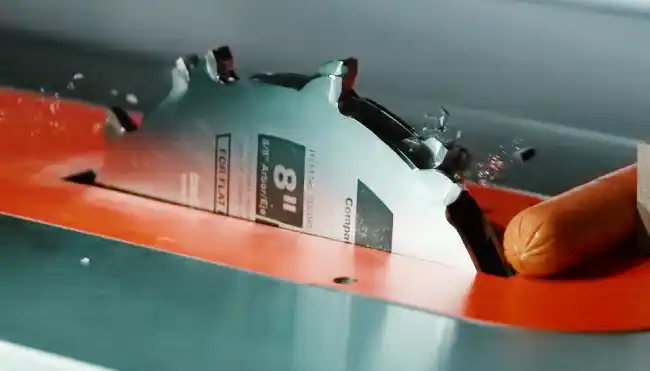
Moving forward, you must address the issue of faulty AFCI breakers when the table saw keeps tripping the breaker. Faulty AFCI breakers can falsely interpret the normal arcing of the table saw motor as a fault, causing unnecessary trips.
To determine if the AFCI breaker is faulty, check for any visible signs of damage, such as melted plastic or burnt marks. Additionally, try resetting the breaker and see if it continues to trip.
If the problem persists, replacing the AFCI breaker with a standard circuit breaker is recommended. This will prevent false trips and ensure the proper functioning of the table saw.
9. Inadequate Circuit Wiring
Insufficient wiring can impede the flow of electricity, causing the motor to struggle during startup and leading to the breaker tripping. This occurs because the motor requires some power to start and operate properly.
If the circuit’s wiring cannot handle the motor’s power requirements, it can result in the breaker being overloaded and shutting off.
To resolve this issue, it’s necessary to upgrade the circuit’s wiring to a larger gauge that can handle the power demands of the table saw’s motor. Seek the assistance of a qualified electrician to ensure the task is performed safely and effectively.
10. Thermal Overload
Thermal overload occurs when the motor of the table saw becomes too hot due to prolonged use without allowing it to cool down. This excessive heat can cause the breaker to trip as a safety measure.
To prevent thermal overload during long cutting sessions, I suggest implementing a cooldown period. This involves turning off the table saw and allowing the motor to rest and cool down before resuming work.
What is the most common cause of a tripped breaker for a table saw?
The primary cause of a tripped circuit breaker for a table saw is an electrical overload. This occurs when the electrical demand on the circuit exceeds its capacity.
Table saws require significant power to operate, especially when cutting through dense materials. If the saw is connected to a circuit already supplying power to other heavy-duty appliances or equipment, it can easily overload the circuit and trip the breaker.
Also, using extension cords that aren’t rated for the power requirements of the table saw can also lead to an overload.
How do I stop my table saw from tripping the breaker?
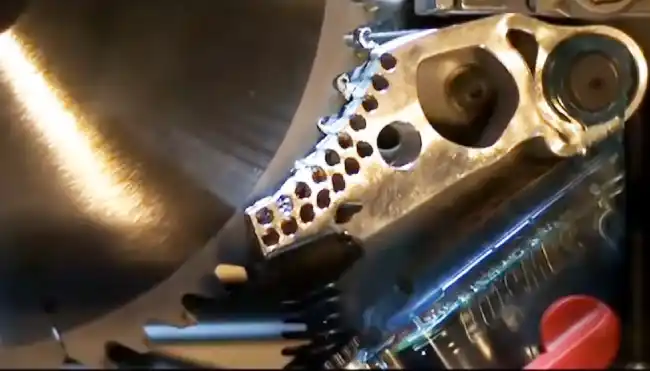
To prevent a table saw from tripping the breaker, you must ensure it’s connected to a dedicated circuit with sufficient power capacity.
The first step is to check the amperage rating of the table saw and make sure it matches the circuit breaker’s rating. If the table saw requires a 15-amp circuit breaker, for example, using a 20-amp breaker would provide a safety margin.
Additionally, avoid overloading the circuit by using other high-power devices simultaneously.
If the table saw is consistently tripping the breaker, it may be necessary to upgrade the electrical system in the workshop. This could involve installing a dedicated circuit for the table saw or upgrading the electrical panel.
How can I prevent cold weather-related breaker trips with my table saw?
Cold weather can cause the motor components to become stiff and less efficient, leading to increased power consumption and potentially tripping the breaker. Using a motor heater to keep the motor components warm, you can prevent cold weather-related breaker trips with a table saw.
Using a motor heater, you can ensure that the motor stays at the optimal temperature, preventing any issues caused by cold weather. Motor heaters provide a steady heat source to keep motor components warm and flexible so they can run smoothly. This helps avoid sudden power surges or fluctuations.
Is it recommended to use slow-blow fuses with table saws to prevent trips?
When dealing with the issue of table saw tripping the breaker, I advise you to consider using slow-blow fuses as a recommended solution.
Slow-blow fuses can help handle the motor startup surge current, which is often the cause of breaker trips. However, ensure that the fuse rating matches the motor’s requirements. Using a fuse with a higher rating than the motor can handle may damage the motor and other electrical components.
Also, install the slow-blow fuse correctly to ensure proper protection and prevent safety hazards. Before making any changes, I recommend consulting the table saw’s manufacturer or a qualified electrician to ensure the proper fuse rating and installation method for your specific table saw model.
Keep Your Table Saw Running Smoothly to Prevent Breaker Trips
I have discussed several possible reasons why a table saw may keep tripping the breaker, such as overloading the circuit or using an inadequate power supply. To prevent this issue, I recommend ensuring proper electrical setup by using a dedicated circuit and avoiding overloading the saw.
Also, protecting the saw from cold weather can help prevent breaker trips. Consider using slow-blow fuses for added protection. Using a high-quality extension cord, upgrade your wiring and choose the correct breaker for your motor’s requirements.
Follow these practical solutions to get the most out of your saw and enjoy your woodworking projects without interruptions.

